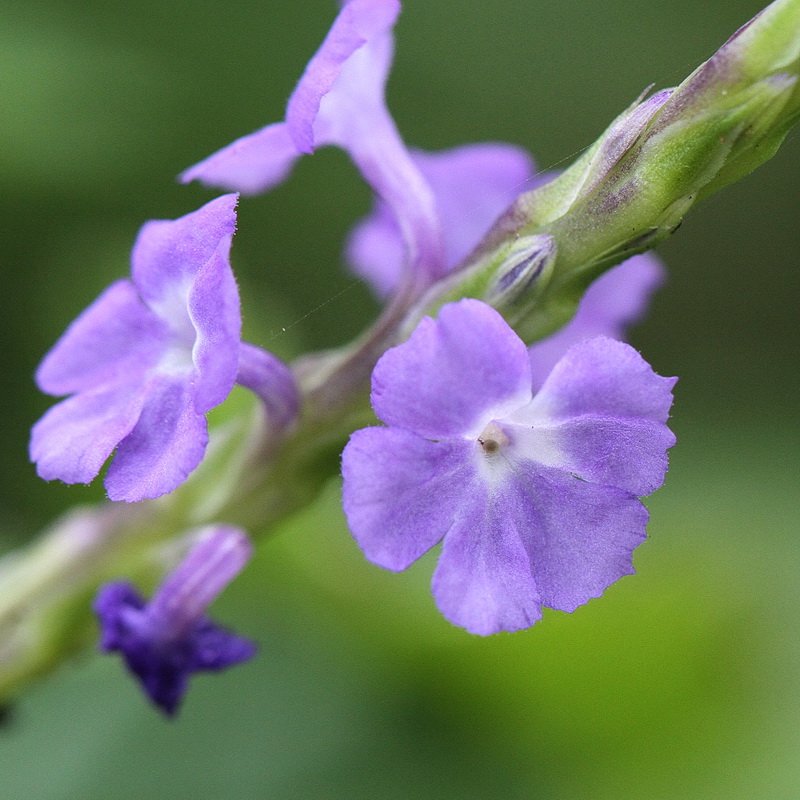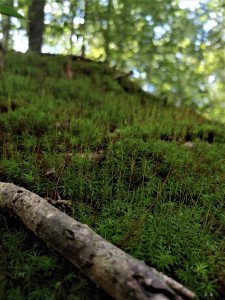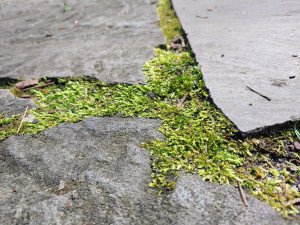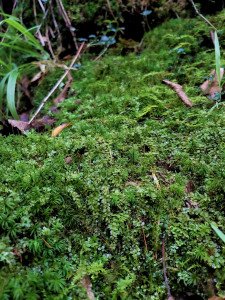Coontie is one of my favorite plants. It is an evergreen cycad, growing to about 3 feet tall and is native to the Florida peninsula. Its natural habitat is dominated by pines growing on well drained sandy to sandy-loam soil. Coontie is a great choice as a foundation plant because it never needs pruning. It grows as broad as it is tall and can tolerate full sun or deep shade, but I think it is happiest in filtered shade.
When we first moved to our home, the lovely brick foundation was completely covered by boxwoods and azaleas that needed a lot of pruning. We removed them all. We planted two coonties flanking the front steps leading to the porch and front door. I had heard they were slow growing, so I fertilized them with organic fertilizer.
They surprised me by growing fairly quickly and I do not attribute the growth rate completely to the fertilizer. Rather, the soil conditions created by the limey cement walkway and brick and mortar foundation and steps seem perfect for coontie. Ferns also like it in this soil; we have a nice stand of maidenhair fern and leatherwood fern growing along this north facing brick foundation.
We also planted two coontie under our huge live oak tree to give an evergreen presence among the woodland wildflowers that come and go throughout the year. They are so graceful looking and did I mention they don’t need pruning?
Every year the female plants produce brown cones that are composed of fleshy bright orange seeds when the cone ripens. Some animal must be eating them, perhaps an opossum, because these coonties are spreading up hill; we find new seedlings regularly.
Coontie, once established, is drought tolerant. It is rated moderately salt tolerant – tolerant of salt winds but not of salt water. It is cold hardy to 15 degrees F. In south Florida, it is the sole larval food plant of the atala butterfly which brings us to a bit of history about coontie.
All parts of coontie are poisonous; however Florida’s early inhabitants, both the Timucuan and Calusa peoples figured out how to remove the toxin cycasin from the large starchy tuber that grows underground. The Seminoles learned the technique of maceration and washing from the earlier people and made it into bread. The common name coontie is derived from the Seminole phrase “conti hateka” which means white root or white bread.
By the 1880s, settlers created mills in Miami to process this starch and by 1911 it became known as Florida arrowroot. During WWI one mill processed up to 18 tons daily for military purchase. Needless to say, coontie was over exploited and to this day little remains in its native habitat. (Probably little of its habitat remains either.).This did not bode well for the atala butterfly, whose tiny caterpillars have to have coontie to feed upon. They are able to break down the cycasin, just as monarchs have evolved to break down the toxins in milkweeds.
The good news is that coontie has more recently become a popular landscape plant in south Florida, both in commercial and residential settings. The atala butterfly population is recovering and will continue to do so as long as folks remember that atala caterpillars will denude their plants from time to time. “Give me holes in my plants, but leave me the butterflies, please!” to paraphrase Joni Mitchell. Coontie remains on Florida’s Commercially Exploited Plant List and the collection of coontie from the wild is prohibited.
We won’t attract atalas here in North Florida, but coontie has so many other attributes to make it a great choice for Tallahassee landscapes. Plant one today!





